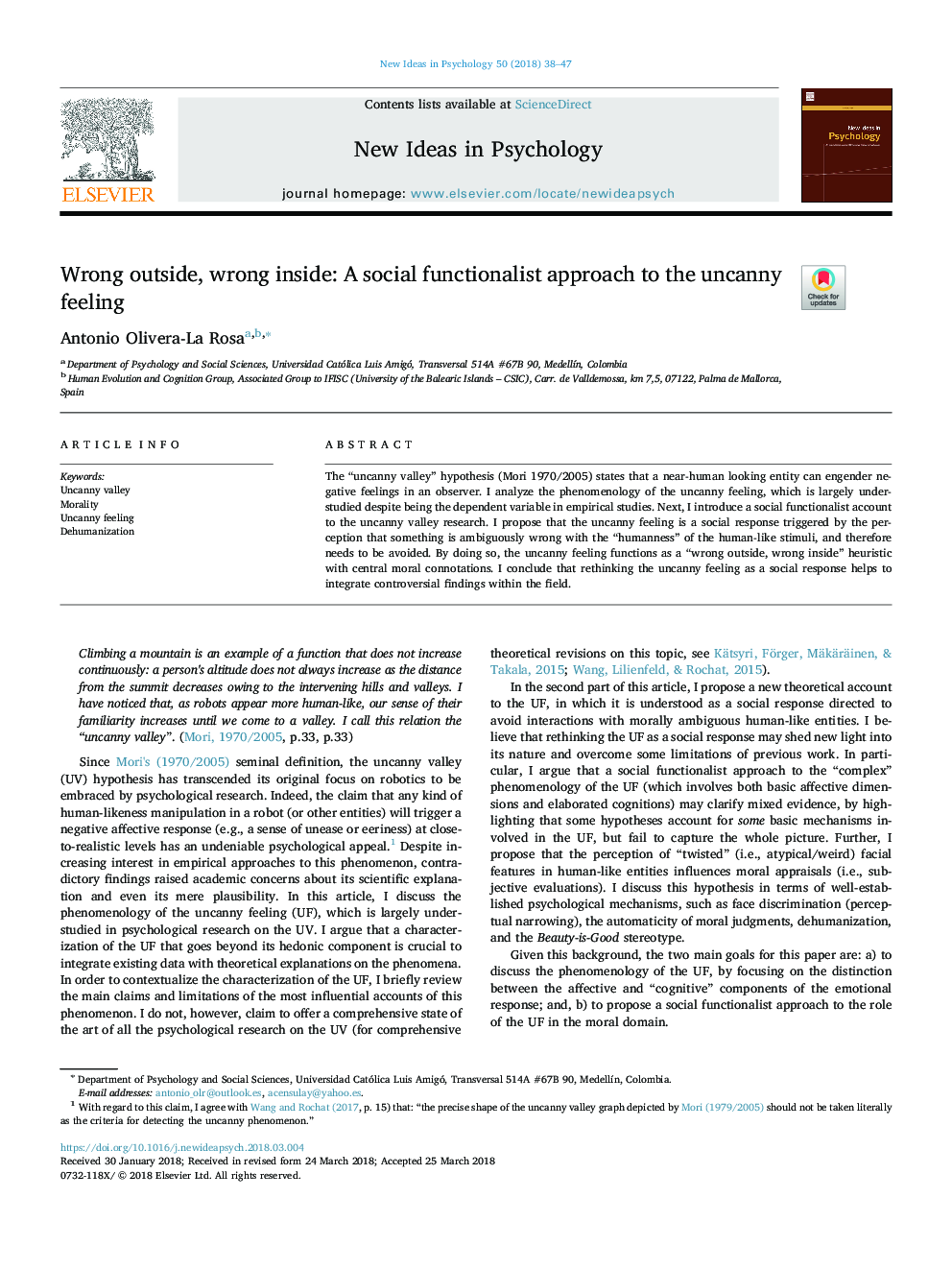| Article ID | Journal | Published Year | Pages | File Type |
|---|---|---|---|---|
| 6810987 | New Ideas in Psychology | 2018 | 10 Pages |
Abstract
The “uncanny valley” hypothesis (Mori 1970/2005) states that a near-human looking entity can engender negative feelings in an observer. I analyze the phenomenology of the uncanny feeling, which is largely understudied despite being the dependent variable in empirical studies. Next, I introduce a social functionalist account to the uncanny valley research. I propose that the uncanny feeling is a social response triggered by the perception that something is ambiguously wrong with the “humanness” of the human-like stimuli, and therefore needs to be avoided. By doing so, the uncanny feeling functions as a “wrong outside, wrong inside” heuristic with central moral connotations. I conclude that rethinking the uncanny feeling as a social response helps to integrate controversial findings within the field.
Keywords
Related Topics
Social Sciences and Humanities
Psychology
Developmental and Educational Psychology
Authors
Antonio Olivera-La Rosa,
